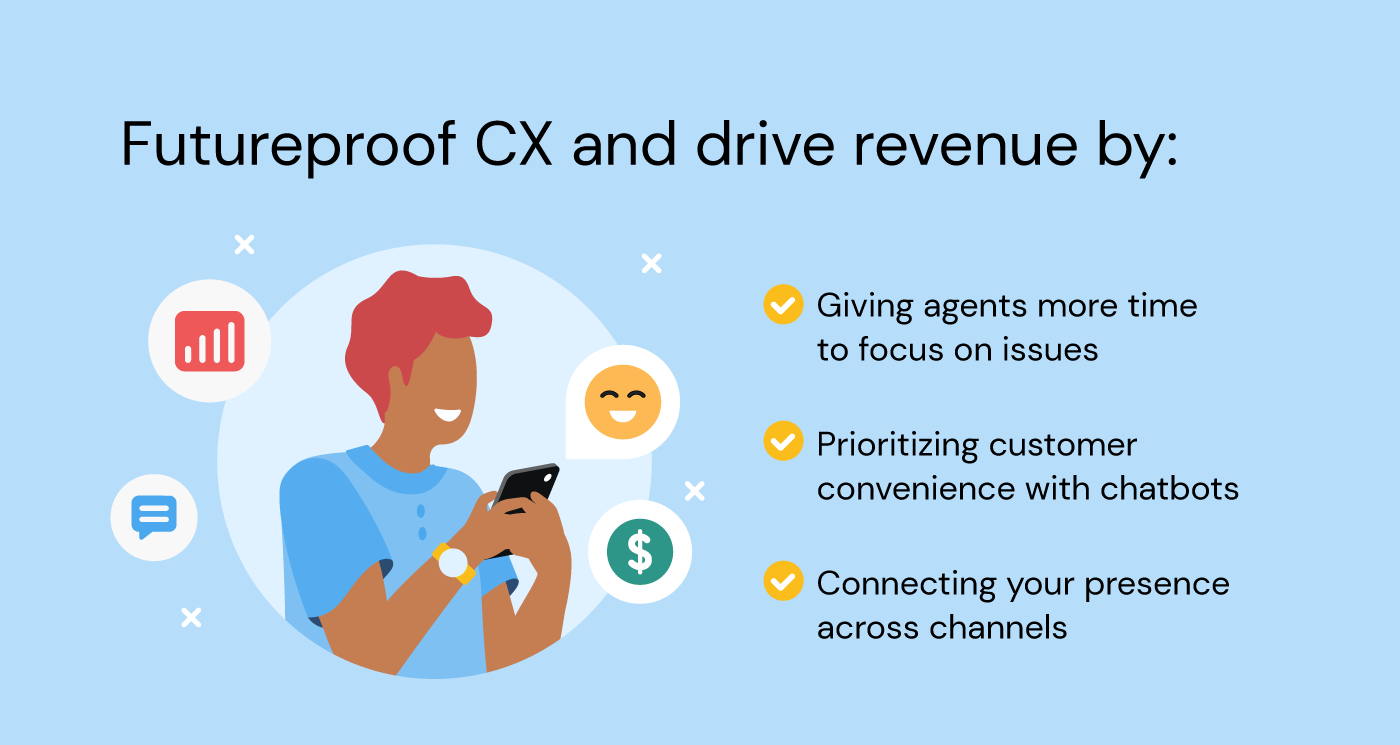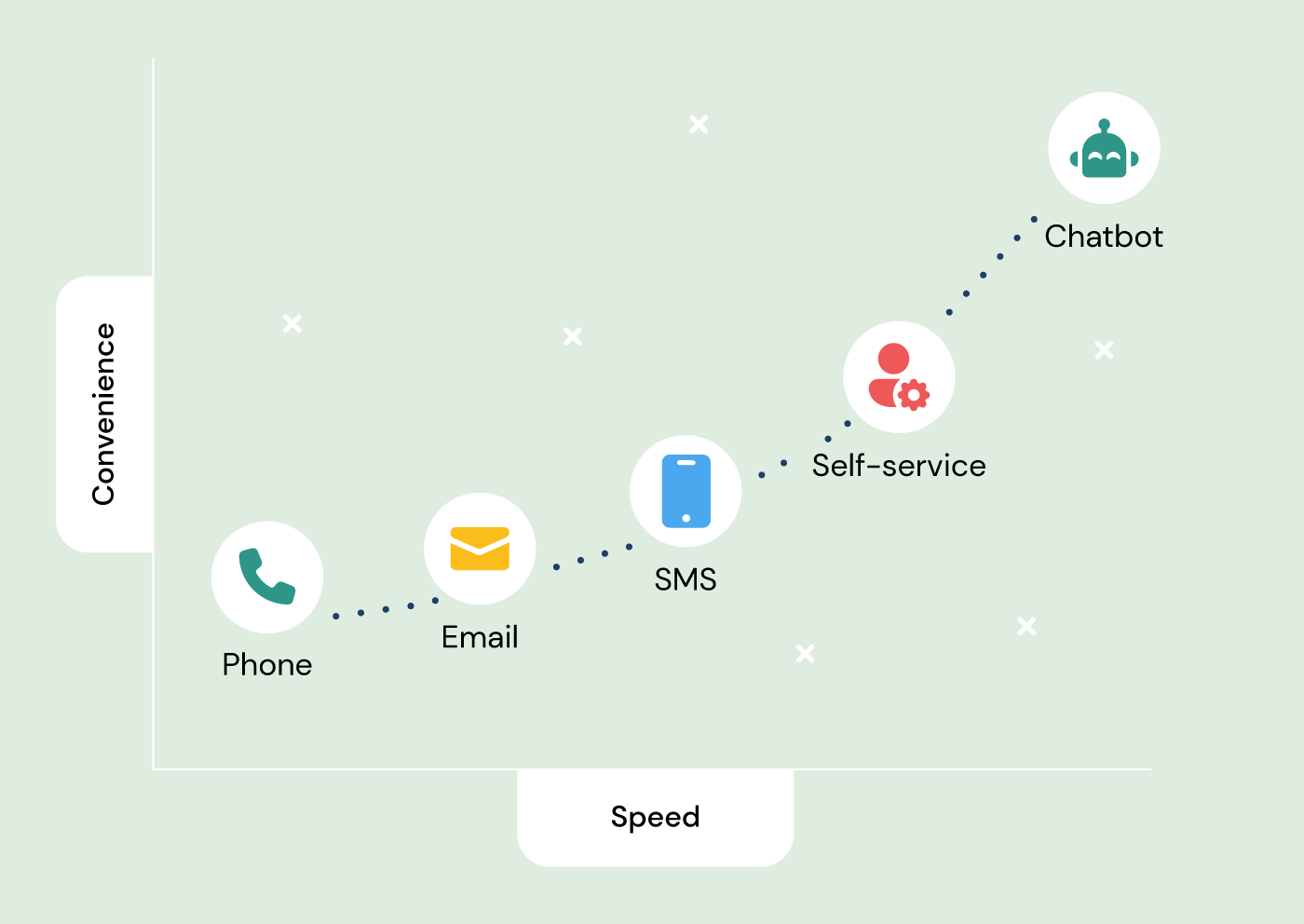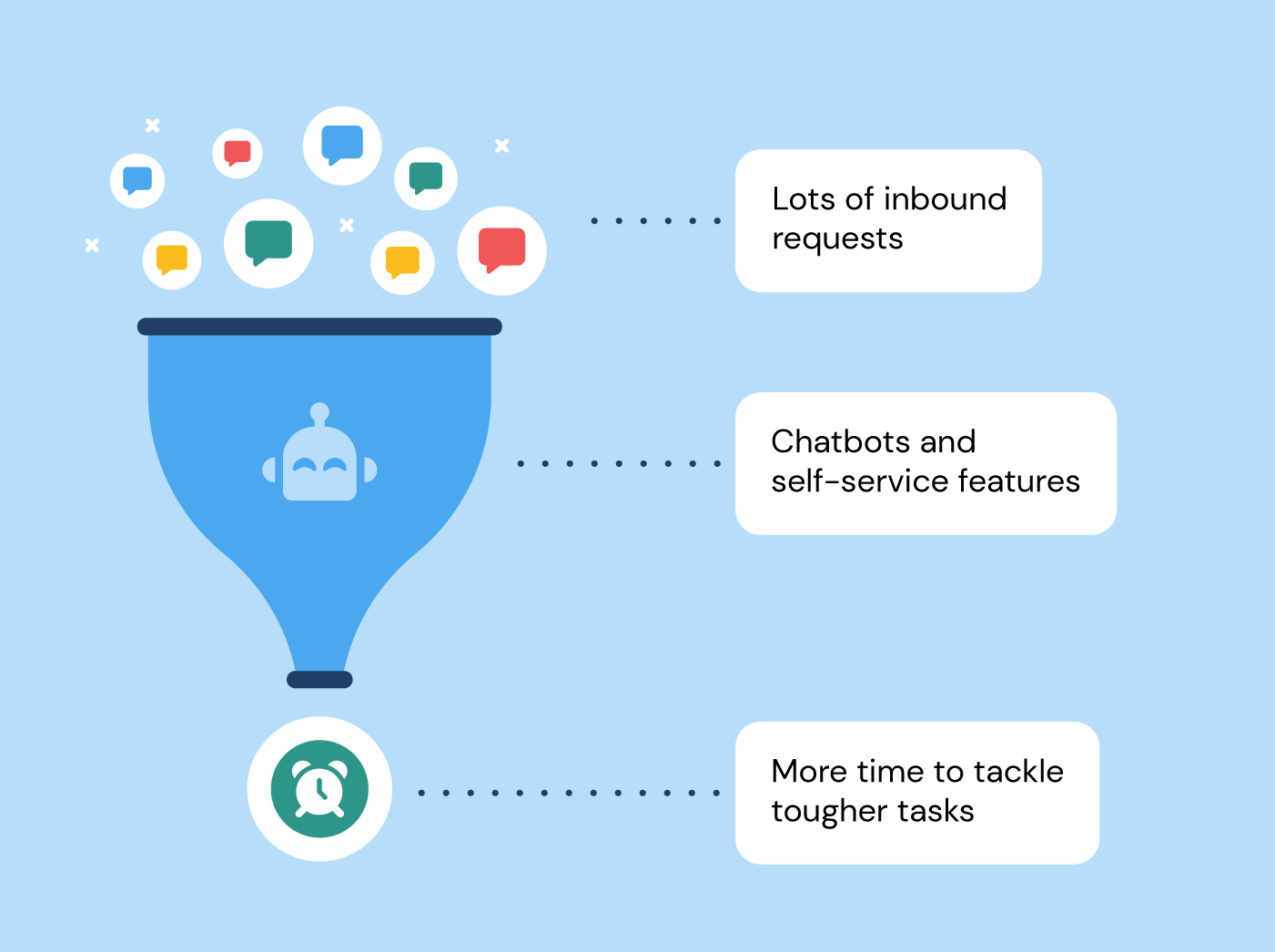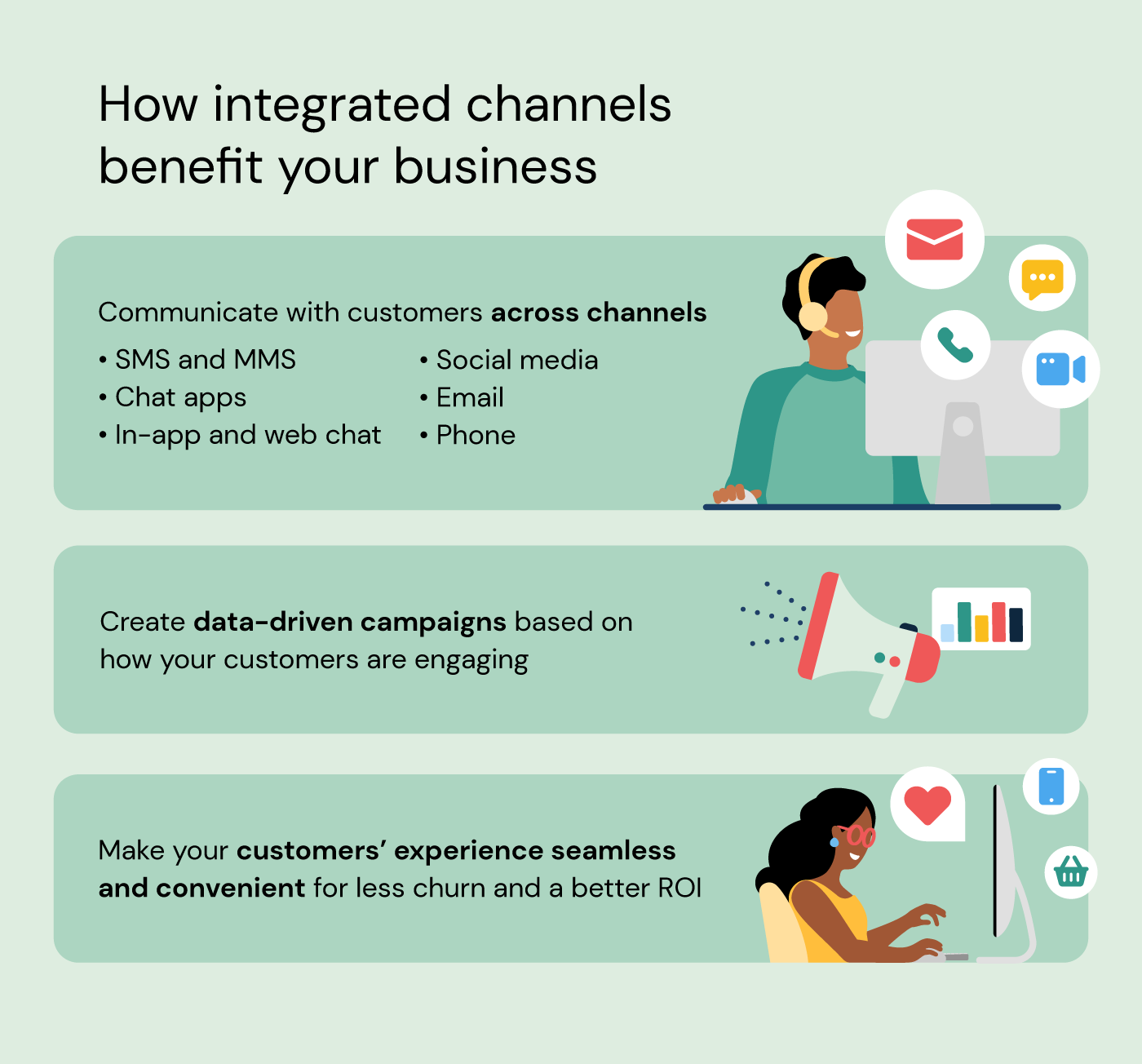Insights
The future of contact centers: 10 trends and predictions

Insights

Referring to anything as “of the future” has a certain sci-fi connotation that implies improvement, novelty, and, most of all, fiction. But the contact center of the future isn’t fiction – it’s right in front of us, and it’s coming fast.
The future of contact centers is evolving rapidly as artificial intelligence (AI) developments begin to change how customers interact with products and services, and how businesses communicate with customers. A question that used to require a trip to the store to speak with a representative can now be answered intuitively by a chatbot.
Let’s explore the 10 biggest trends shaping contact and call centers through the rest of the decade and see what effects those trends have already had on customer behavior and company profits.
It’s no secret that you need to be more competitive than ever to keep up with the demands of the day. Changing tastes and preferences meet shortening attention spans, and you get caught in the middle thinking quickly and making rapid changes.
According to Mika Tuominen, Head of Contact Pro Global Sales at Sinch, a positive customer experience is a prime competitive advantage that enterprises can offer:
“Enterprises face steep competition with their offerings, pricing, and product availability. However, good CX can really make the difference – customers will come back ready to invest more if the experience is positive.”
Customers are quick to jump ship after a negative experience. In fact, one-third of customers will leave a brand they have a good relationship with after a single bad experience. That doesn’t give your business a lot of wiggle room when it comes to customer service consistency.
What does this mean?
The key to winning over customers in this fast-paced world is to provide a positive customer experience with proactive decision-making – that is, anticipating rather than reacting to your customers’ wants and needs.

Diversifying your customer service approach with an omnichannel strategy can help you meet more customers’ needs in more places than ever before.
Gone are the days when a call center meant a group of operators simply answering phones and transferring calls. Today’s contact centers are full-fledged relationship focal points that serve customers over chat, voice, video, email, social, and AI – sometimes all at once. And the future of contact centers involves even more all-encompassing communication.
Your contact center agents are your front line for customer service with their fingers on the pulse of your customer base. This means they have the first chance at diagnosing problems and offering real solutions.
What does this mean?
Agents need to be ready to tackle complex problems, but that doesn’t mean you need to find superhumans to do the job. Instead, by focusing on relationship-building with your customers, agents can discover novel insights that help other teams, like marketing and R&D.
Tuominen notes that channel interconnectivity is crucial to keep customers happy:
“Agents need to be able to see quickly into prior conversations before engaging with a customer, no matter which channels the customer previously used. Smart, back-end tools like company knowledge base systems for answering complex requests or providing personalized offerings can really make all the difference in exceeding customer expectations.”
Being flexible and using the right conversational tools can help you forge long-lasting relationships that build loyalty – the true currency of the next decade in customer service.
In the future, contact centers might not staff Rosey the Robot, but they will have ample assistance from conversational AI. This tech has vast language processing capabilities and can already handle frequently asked questions and simple tasks. And as AI tools get smarter, they’ll help agents avoid even more repetitive work.
What does this mean?
Humans aren’t going anywhere. Instead, AI can help you reorganize and streamline your workflow to work smarter, not harder.

Switching instantly from chat messaging to a voice call is important to 95% of customers. With the call center of the future, AI and agents can work together to provide a personalized customer experience during that handoff, with AI informing the agent of everything they need to know so a customer feels taken care of.
For example, if you sell magazines, you might choose to put your best sales agents in the cancellation department. AI can hand the conversation off when it becomes apparent that a customer wants to cancel, so the agents can step in to reduce cancellations and potentially even sell more.
You already know that customers want you to meet them where they are. In the future, this won’t only mean a WhatsApp presence or an Instagram account. Instead, you’ll need to include location-based services as part of your repertoire.
Contact centers were hiring remotely before it became popular, offering employees more flexibility while saving on costs. They’re already part of an omnichannel approach but are closer to home for many customers, meaning they can offer more realistic solutions that are specific to needs based on customer location.
What does this mean?
For certain sectors, location-based services help deliver more accurate and relevant information and support.
However, Tuominen notes that ease of access is key when it comes to these knowledge resources:
“Access to back-end systems and back office experts has to be seamless to avoid delaying the conversation.”
You might use agents with knowledge of a particular area to arrange for convenience-based services for local customers, like order deliveries and return pickup. For more technical products, agents might provide house calls to address problems quickly and accurately.
One flip side to AI handling more menial tasks is that the tougher problems are more quickly elevated to support agents. Since customers can use knowledge bases to answer baseline questions, escalating a task to a support agent means it’s likely more complex in nature.
What does this mean?
Agents need to prepare to handle the influx. Customers will quickly learn that they don’t need to bring simple questions to a support agent, but when they do come calling, their problems will be more difficult to address.

This leaves agents with more time to handle these problems, since chatbots can help customers work through simpler issues. With a greater percentage of their time devoted to core issues, your agents can derive insights that help you transform your business into a leaner customer service machine that wows everyone it helps.
Communication is crucial when it comes to improving the customer experience, and that’s not changing in the future. If anything, your customers will want even quicker and more reliable communication from you about the things they care about most – and none of the things they don’t.
More customers are relying on mobile devices, so companies need to cater to that above other avenues. Contact center agents also need mobile functionality for support tasks when working remotely.
What does this mean?
Think outside the box when it comes to mobile-first solutions. While important, focusing on mobile doesn’t just mean having an app or a mobile-friendly website. In fact, it means figuring out how your customers use their mobile devices to do business with you in the first place. How can you meet those needs?
Part of an omnichannel retail strategy includes shopping functionality across different social media apps where customers can make purchases. That way, customers can find you through their favorite platform, which also happens to provide stellar data insights to your support team.
Voice technology, biometrics, and other verification measures will become a critical part of the user experience. Contact centers that harness this technology first will have a leg up on their competition because customers will see them as industry leaders with their best interests in mind – namely, their safety and security.
What does this mean?
87% of customers believe that data privacy is their right. That number’s too big to ignore, meaning you need to prioritize security to build trust and loyalty long term. A customer who feels valued and safeguarded will be more likely to remain a customer for longer, as well as refer others to you.
With more devices connected to the internet, contact centers have more opportunities than ever before to provide preemptive service to customers.
This means anticipating their needs and meeting them – sometimes even before a customer knows, like using data insights to find the optimal time to replace a beloved product that they use.
What does this mean?
It’s easy to get used to convenience. Customers will grow to expect preemptive service as this trend accelerates and they view other ways of doing business as unfathomable or just plain inconvenient.
Tuominen says the quality of the tools that contact centers use to bridge connections is important:
“To anticipate needs correctly, you need to integrate smart, high-quality tools that can process customer data and other insights efficiently and effectively. The contact center has to be able to fully support this initiative.”
Use data insights and technological developments to stay on the lookout for new ways to integrate with customers’ lives. The more convenient you make things for them, the more likely they are to stick around.
The booming world of VR is affecting every industry. Customers can use it to try on clothing, test features on a new vehicle, or experience an event that they can’t (or don’t want to) attend in person.
From a contact center perspective, VR can combine instantaneous support with in-person assistance for complex problems that require demonstrations, walk-throughs, and more.
What does this mean?
Remember when we said that convenience was important to building customer trust and loyalty? VR holds the potential to make convenience the central facet of customer service so that the customer experience gets better and better.
You can even apply this convenience to internal operations like training and hiring for contact centers. Remote support agents can use the technology to feel more connected with their peers in training sessions while avoiding commuting costs.
The above trends are so wide-reaching that they’ll virtually transform contact centers and how they do business from the inside out. And you can’t align with all these trends in tandem without harnessing the power of a CPaaS solution.
CPaaS is crucial to developing a competitive edge with any business that deals in communication with users; can you think of a single business that doesn’t do that?
What does this mean?
A strong CPaaS solution builds the foundation of an effective contact center, but it’s not the only component.

Multiple channels need to work together to bridge customer insights into a clear picture that you can harness to grow your business. That includes insights from basic email and chat support, but also social media messaging, voice, and video calling.
Lucky for you, Sinch is in a unique position to support CPaaS with a range of comprehensive enterprise solutions for contact centers, chatbots and voice bots, messaging, voice, email, verification, and more.
The future of contact centers is here, and you need a comprehensive solution to help you meet it.
Joining forces with a CPaaS partner like Sinch unlocks opportunities to expand your communications strategy beyond any single lane. And Sinch can help you start by taking your contact center into the future to offer omnichannel support, no matter where your customers are.